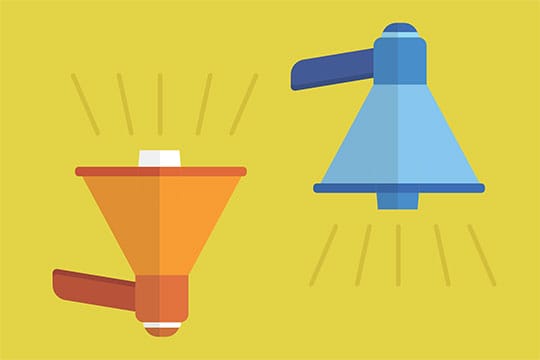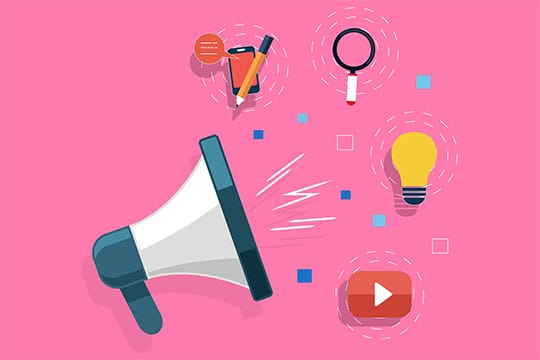Digital marketing is not just about SEO techniques, analytics, and advertising. There is more to it. They have to get to the subconscious level of the consumer. Because that’s where the decision to buy happens. This is what is digital marketing strategies should try to tap into – persuasion techniques and how to use them in social media marketing. It is, after all, persuasion that helps consumers tempted to buy a product.
Persuasion techniques involve writing persuasive content about the product that identifies with the problem of the consumer and solves it. It is not just technical know-how about SEO techniques, but a psychological understanding of the end-user, because after all, they are humans, who will be buying your products.
What is a persuasion technique?

Persuasion is the core of a persuasion technique. Persuasion is not some coding language, or SEO technique, but is a literary feature. Writers from the advertising field, digital marketers, e-commerce copy, all use persuasive copy to induce the viewer into making them click on the ‘Buy’ button. It is a copywriting tool that makes a favorable image of the product in the minds of the buyer and convinces them that this is what they are looking for.
Recommended for you: Social Media Best Practices for Small Businesses in 2022.
What is a persuasion technique in social media marketing?

Persuasion techniques are used during the promotion of products and services on social media. They are employed in every aspect of marketing channels like social media posts, landing pages, and website design. Even marketing content is written adopting these persuasion techniques. Product descriptions, header text, all have some sort of persuasion going into them. It is that written piece of text that tempts the consumer into performing the desired action.
Types of persuasion

Every persuasion technique falls in some type of persuasion. Understanding these types of persuasion enables social media managers to identify the right persuasion to be used in their marketing copy. It is essential to identify these persuasion types as every consumer is different, and they can be induced into buying products by applying a certain persuasion type.
Pathos

Pathos is when persuasion uses emotions in its marketing to attract consumers. Social media influencers often use these to directly target consumers with an emotional copy. For this, they have to understand what basic human need is fulfilled by their products and services. Understanding Maslow’s Hierarchy of Needs is crucial and will give a basic idea of how to write a persuasive copy after identifying the value of products and services to target consumers.
Ethos

Ethos ascertains the originality and credentials of what the product or service is offering. When consumers read about the credentials of a product, they are convinced about the authenticity of the product. They are also convinced that the product will satisfy what they need.
Logos

By using a logo, consumers are subconsciously convinced that what they are about to buy is an authentic product. Logos help make a mark on the branding of the product in the minds of the consumers. Logos is not only a branding tool but establishes trust and value of the product. Whenever consumers see the logo, they know that the product is about a particular company, and it is their product.
Data and Statistics

Digital marketers can use data and statistics to make a decisive statement about the value of the product. They can use market research data to show how their products have been tested in the market. Hard data is sometimes, more credible than all other means of persuasion. Often, it is the one thing that strikes the consumers into making an informed decision.
Deliberation

By using deliberation as a type of persuasion, social media marketing teams can change the perspective of consumers. The consumers are channeled to think about the priorities that they want to achieve by using the product or service. By asking pertinent questions that challenge the way the consumer thinks, deliberation is the act of putting priorities into perspective and addressing this new vision.
You may like: 6 Types of Content to Stay Away when Building a Corporate Social Media Brand.
Factors to consider in persuasive marketing

“Let’s presume that the cold traffic we’ve got coming in needs a little more persuasion to become a lead. They don’t know how we can solve their problem yet, or perhaps they aren’t convinced we truly understand their pain.” – as explained by Claire Jarrett in one of her recent articles. As she continued, “You’ll need to set up a piece of marketing that overcomes this – it could be a blog or a lead magnet such as a guide or a webinar. Create a landing page for it and then order some images to match from a designer in a few common sizes.”
Persuasion techniques can be included in writing marketing copy and content for social media promotion. It can make a tremendous difference between low and high conversion rates. By using and adopting persuasive marketing content writing to marketing campaigns, digital marketing teams can leverage persuasive writing tools to showcase their products in more beneficial ways.
Structured Communication

By thrusting your marketing copy on consumers is not getting to make them buy your product. But gradually and systematically structuring your content and layering it across platforms at regular stages is the right way to make the desired impact on consumers. Messages should be sent in a sequence and stages, to not overwhelm consumers into buying a product. Content should be distributed first. Until consumers land on the landing page, they should be sufficiently tempted to buy a product.
Storytelling

Communicating with the consumers comes in a whole lot of ways. Storytelling is one. Brand stories can be used effectively to tap into the subconscious and emotional states of the consumers. Like a story, the brand should be spotlighted on the emotional level to impact consumers. Consumers can be able to identify their own needs and can relate to the product.
Copywriting

Like a juggler plays with tools, a copywriter plays with words. He comes up with not just words, but phrases that target the consumers at a psychological level. He combines words and phrases, tests them and their impact, and creates a copy that is both persuasive and impactful. For marketers and advertising professionals, copywriting is the means of delivering a suitable image of the product.
Neuromarketing

Neuromarketing is a subtle way of inducing consumers into buying the product. It is done by creating a mood before consumers read the copy, and this is done through effective visuals. Visuals should be according to the product, and they help in creating an atmosphere and environment, with which the consumers identify, and is anticipating when they see the product.
Social Proof

Humans tend to buy products with good reviews. This is the greatest advantage in social media marketing. Visitors and consumers who have tested and bought the product will leave their testimonials and product reviews and this helps in building proof of the usability of the product or service. Social proof sends a direct message and makes a strong psychological impact on consumers who are looking for something that testifies the value of the product.
Persuasive techniques

Some techniques are central to social media marketing. But they are not always effective. With evolving social media presence and trends, there are new persuasive techniques that make their presence felt. Copywriters and digital marketers constantly review and track these changing social media scenarios to identify the most effective persuasion techniques that are trending.
Anticipation

Announcing a coming of an event builds anticipation among followers, and this can be an effective way of persuasion technique. Anticipating an upcoming event will generate interest and create a consumer base even before the actual event. Big brands have a huge following on social media and this fan base can be tapped into by building anticipation. Media channels like television, radio, web can be leveraged to regularly spotlight and advertise an upcoming show or event. Even a web show can be organized, and viewers can be interviewed about how they see the upcoming event unfold.
Recommended for you: Social Media Marketing Solutions Driving Towards $41.6B Led by Video.
Reciprocity

When consumers are given free stuff, they grow more loyal. This attribute of consumers can be targeted by marketers to make prospective consumers turn into buyers. By reciprocating to free things, buyers increase and turn into loyal followers, who wait for a new launch or new offering. Marketers can use email marketing to shoot more productive content, offering some free stuff like free membership, discounts, coupons, eBooks, etc.
Likeability

Marketers pitch marketing campaigns with the sole intent of selling and advertising their products and services. But while making the sales pitch, is the content likable? Do consumers like what is being sent to them? Without answering these questions, marketers should test their content and whether it suits their product or not. Consumers should like what they read, and any negative words or sections should be omitted.
Emotions

Persuasion techniques such as using emotions in words can be best in grabbing the attention of consumers. Emotions can be used subtlety and strikingly. This technique is effective in both B2C and B2B branding. Storytelling can be used as an effective persuasion strategy. It can be used to attract consumers by identifying the story of the company and its struggle and progress. It can tap into the emotional chord of not only the existing consumers but also of future consumers. Consumers can sense a feeling of being one with the brand.
Controversies

Controversies and controversial figures can add just that Midas touch to your product and service. It can spiral your product into attaining cult status and make a huge amount of following. Making a social media campaign with controversial figures can be a bit tricky. But the risk is worth taking, as the audience may like the message contained in the promotion. They are already having a strong view of that figure and seeing him or her on the promotion campaign will stimulate them into liking the campaign and ultimately grow more loyal to the brand.
Logic

Using logic might be one of the effective persuasion marketing techniques. It uses hard facts and statistical data to underline its products. Logic is a more direct persuasion technique and uses data to substantiate claims about a product. Consumers who are not easily induced by tricky marketing jargon will find it more logical to follow a campaign that is based on facts and figures. Using simple and direct words and ignoring jargon and flashy sounding words can make a marketing copy more logical.
Reaffirming Beliefs

Social media marketing can use a psychological aspect of consumers by taking their sides. Such a persuasion technique always wins them over. By affirming the beliefs of consumers, you also communicate to them that you are on their side. It is what the consumers like and gives strong positive feedback. Marketing copy can be restructured and rephrased to make it appear that you as a brand are standing by your consumer’s beliefs.
Breaking myths

Digital marketing can also be poor and quite often consumers do not know the actual value of the product. They may be the victim of rumors and harbor myths and doubts about your product offering. Digital marketing teams can pick up research tools and questionnaires about their product and hand them to consumers to know how aware they are of their brands. Myths can then surface and be dispelled with the right marketing copy. By bringing effective communicators and increasing interaction among your target consumers, marketers can make the consumers more loyal.
Show Reality

Reality can be hard, but it is needed to stimulate consumers into taking direct action. Content and marketing copy can be designed in such a way that consumers can dispel any doubts they have and understand reality. They can then become aware of the actual problem that they are facing, and this can be an eye-opener for them. You can use logic, or a humorous tone in your content to make them like it. Accepting the problem can then also mean that they will realize the benefits of your products and buy them and become loyal customers.
Proofs and Results

Making hollow claims can destroy the reputation of products. But by substantiating them with solid proof, you can boost their sales. You can make your claim about a product more solid by showing exact proof, data, internal test results, case studies, progress charts, and consumer testimonials. Proof about the usability of a product with matching figures and data makes these make them credible and add value to them.
Endorsements

Endorsing a brand or product through the right target consumer is often one of the best persuasion techniques. Consumers are tempted into buying a product when they see a social media influencer endorsing that brand. Big celebrities can spotlight a brand and make it big. But small brands also can scan through their emails and contacts to search for the right audience that can endorse their brand. Bloggers, influencers, Instagrammers, often play a key role in endorsing a product.
Stories

Stories create a flow in the mind of the consumer and bring a purpose into how do they perceive a brand. Brands can be brought to life by weaving stories around them and making consumers hear them or see them on social media channels. This way storytelling can be one of the best persuasion techniques. You can create all the elements of storytelling and tell the story of your brand. Create a protagonist, antagonist, throw in some struggle, drama, and you are well on your path to making a truly marvelous story about your brand. Show it regularly on social media, make characters believable, and followers will increase. You can make it even more interesting by running contests, making a quiz, ask your followers to guess among the options.
Authority

Showing you are the authority in a particular segment can boost your branding. Here, authority can be a bit unnerving, but when it is shown in the right methods, it can work wonders. Write copy and show how consumers were benefited from your product, or how did they progress after using your product. Share data and statistics, show trust badges, ask for credentials from users, and you have the right content to add value to your claim. Your product will then be seen as something that offers value and is not just a false claim.
Scarcity

Making consumers know that a particular product is scarce can make them buy it on impulse and quickly. You must make the marketing copy with words such as “hurry”, “limited deal”, “offer valid till this and this date”, and so on. Scarcity is one of the effective persuasion techniques used by the e-commerce industry. It often leads to a flash sale. Buyers get scared that the product will not last long, and this makes them buy that. Scarcity makes use of the instinct of consumers of the consequences of not buying a product.
Urgency

Urgency is such a persuasion marketing technique that makes the audience make a prompt note of it and act fast. It is like saying that they have to act fast, or the product will expire. They are shown why they must show urgency in buying that product. Urgency is a psychological trigger that spurs them into making a quick decision to buy a particular product or avail of a service.
You may also like: How to Improve Social Signals of Your Website for SEO?
Conclusion

Writing a persuasive copy is essential for selling a product. Marketers use it effectively in creating marketing copy of landing pages, websites, social marketing posts, blog posts, email copy, and newsletters. By exploiting the consumers at a psychological level, they can bring out the desired response in them. They can make use of market research data, analytics to know the demographics of consumers and target the particular segment of consumers at the right time and through the right channel. By deploying such persuasion techniques discussed above, digital marketing can reach its goals, and contribute to the profits of the company.



